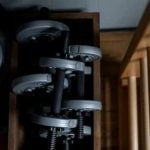The use of fitness gear, particularly stability balls, has gained popularity in recent years as more individuals seek effective and versatile workout options. Incorporating fitness gear stability ball exercises into your routine can help improve strength, balance, and flexibility. These exercises offer a challenging yet rewarding way to enhance your overall fitness level.
Stability balls are known for their ability to engage multiple muscle groups simultaneously while also improving core strength. By incorporating these inflatable balls into your workouts, you can make traditional exercises more dynamic and challenging. Fitness enthusiasts of all levels can benefit from stability ball exercises, whether you are a beginner looking to build foundational strength or an advanced athlete seeking to take your workouts to the next level.
In this article, we will explore the various benefits of using a stability ball in fitness workouts, discuss how to choose the right size stability ball for your body, and provide a range of basic, intermediate, and advanced stability ball exercises for a total body workout experience. Whether you are new to using fitness gear like stability balls or looking to add variety to your current routine, incorporating these exercises can help you achieve your health and fitness goals effectively.
Benefits of Using a Stability Ball in Fitness Workouts
Using a stability ball in your fitness workouts can offer a wide range of benefits that can enhance your overall exercise routine. One major advantage is that stability ball exercises engage multiple muscle groups simultaneously, helping improve balance and coordination.
This type of training not only increases core strength but also helps with stability and proprioception, which are essential for everyday activities and sports performance. By incorporating a stability ball into your workouts, you can challenge your body in new ways and prevent workout plateaus.
Additionally, using a stability ball can help improve posture by strengthening the muscles that support the spine. Sitting on the ball promotes proper alignment of the spine and pelvis, which can alleviate back pain caused by poor posture.
The instability of the ball forces your muscles to work harder to maintain balance, leading to improved posture over time. In this way, incorporating stability ball exercises into your fitness routine not only targets specific muscle groups but also promotes overall spinal health.
Furthermore, using a stability ball in your workouts can add an element of fun and creativity to your exercise regimen. The versatile nature of the stability ball allows for endless exercise variations that target different muscle groups.
From basic core exercises to advanced full-body movements, the stability ball offers a unique way to spice up your workouts and keep them interesting and challenging. Whether you are a beginner looking to build strength or an experienced fitness enthusiast seeking new challenges, incorporating fitness gear stability ball exercises into your routine can bring excitement and results to your workouts.
| Benefit | Description |
|---|---|
| Muscle Engagement | Stability ball exercises engage multiple muscle groups simultaneously for improved balance and coordination. |
| Posture Improvement | Strengthens muscles supporting the spine, promoting proper alignment and reducing back pain from poor posture. |
| Creativity & Fun | The versatility of stability balls allows for varied exercise options to keep workouts interesting while targeting different muscle groups. |
Choosing the Right Size Stability Ball for Your Body
When it comes to incorporating a stability ball into your fitness routine, one of the most important aspects to consider is choosing the right size stability ball for your body. The size of the stability ball will have a significant impact on the effectiveness of your workout as well as your overall comfort and safety. It is essential to select a stability ball that matches your height and body type to ensure proper form and alignment during exercises.
To determine the correct size stability ball for you, there are a few general guidelines to follow. If you are under 5 feet 5 inches tall, a 55-cm stability ball is typically recommended. For individuals between 5 feet 6 inches and 5 feet 11 inches tall, a 65-cm stability ball is suitable.
And for those who are 6 feet or taller, a 75-cm stability ball is usually the best option. Keep in mind that these are just guidelines and it’s essential to also consider your individual body proportions and personal comfort when selecting a stability ball.
Using an incorrectly sized stability ball can lead to ineffective workouts, poor posture, and even injury. A properly sized stability ball should allow you to sit on it with knees at a right angle and feet flat on the floor.
When using it for exercises such as planks or bridges, your hips should be in line with your shoulders while maintaining proper balance and control. By selecting the right size stability ball for your body, you can maximize the benefits of your workout while reducing the risk of strain or injury.
Basic Stability Ball Exercises for Beginners
Stability balls are a versatile piece of fitness gear that can add a fun and challenging element to your workout routine. For beginners, incorporating basic stability ball exercises can help improve balance, core strength, and overall stability. One simple yet effective exercise is the stability ball plank.
To perform this exercise, place your forearms on the stability ball with your legs extended behind you in a plank position. Hold this position for 30 seconds to start, gradually increasing the time as you build strength.
Another great beginner exercise is the stability ball squat. Stand with the stability ball between your lower back and a wall for support. Keeping your feet hip-width apart, slowly lower yourself into a squat position by bending your knees while keeping your back straight. Push through your heels to return to standing position. This exercise not only works your lower body muscles but also helps improve balance and posture.
Additionally, beginners can try stability ball hamstring curls to target the muscles in the back of the legs. Start by lying on your back with your heels resting on top of the stability ball. Lift your hips off the ground into a bridge position and slowly roll the ball towards you by bending your knees.
Extend your legs back out and lower your hips to complete one rep. Performing these basic stability ball exercises consistently will not only help strengthen key muscle groups but also lay a solid foundation for more challenging workouts in the future.
Intermediate Stability Ball Exercises for Increased Strength and Balance
If you have mastered the basic stability ball exercises and are looking to further challenge your body, the intermediate stability ball exercises are perfect for you. These exercises will help not only increase your strength but also improve your balance and stability. Here are some intermediate stability ball exercises to add to your workout routine:
- Plank with Leg Lift: Start in a plank position with your feet on the stability ball. Lift one leg off the ball while keeping your core engaged, then switch legs.
- Single-Leg Squats: Stand in front of the stability ball with one foot resting on top. Slowly lower yourself into a squat position while keeping your balance on one leg.
- Stability Ball Push-Ups: Place your hands on the floor in a push-up position and rest your shins on top of the stability ball. Perform push-ups while stabilizing yourself on the ball.
These intermediate stability ball exercises require more coordination and strength than their basic counterparts, so make sure to focus on proper form and technique to prevent injury while getting the most out of your workout.
Adding these challenges to your fitness routine can help take your workouts to the next level. The instability of the stability ball forces you to engage more muscles while performing each exercise, leading to a stronger and more stable body overall. So don’t be afraid to push yourself with these intermediate stability ball exercises for increased strength and balance.
Advanced Stability Ball Exercises for a Total Body Workout
When you have mastered the basics and are ready to take your fitness routine to the next level, advanced stability ball exercises offer a challenging and effective way to work your entire body. These exercises not only target specific muscle groups but also engage your core for improved stability and balance. Here are some advanced stability ball exercises to incorporate into your workout routine:
- Plank Pike: Start in a plank position with your feet on the stability ball. Keeping your legs straight, use your core muscles to lift your hips towards the ceiling, forming an inverted V shape. Slowly lower back down to complete one rep.
- Stability Ball Push-Up: Place your hands on the ground shoulder-width apart and rest your shins on top of the stability ball. Perform a push-up by lowering yourself towards the ground, then pressing back up. This exercise adds an extra challenge to traditional push-ups by engaging more stabilizing muscles.
- Russian Twist with Medicine Ball: Sit on the stability ball holding a medicine ball at chest level. Lean back slightly until you feel tension in your core muscles. Rotate your torso to one side, bringing the medicine ball towards the hip. Return to center and twist to the other side.
Incorporating these advanced stability ball exercises into your fitness routine can help improve strength, balance, and overall athletic performance. Remember to maintain proper form throughout each exercise to prevent injuries and maximize results. Challenge yourself by increasing repetitions or holding each exercise for longer periods as you progress in your fitness journey using fitness gear stability ball exercises at every step.
Tips for Proper Form and Technique When Using a Stability Ball
When using a stability ball for your fitness workouts, it is essential to focus on proper form and technique to maximize the benefits and prevent injury. One key tip for maintaining good form is to ensure that your body is properly aligned while performing exercises on the stability ball.
For example, when doing a stability ball plank, make sure your wrists are directly under your shoulders and your body forms a straight line from head to heels. This alignment not only helps you target the intended muscle groups effectively but also reduces the risk of strain or discomfort.
Another important aspect of proper form when using a stability ball is engaging your core muscles throughout the exercises. As the unstable surface of the stability ball challenges your balance, stabilizing your core becomes crucial for maintaining control and stability.
Whether you are doing crunches, squats, or push-ups on the stability ball, focus on drawing your navel in towards your spine and activating your core muscles to support your movements. This not only enhances the effectiveness of the exercise but also helps in strengthening and toning your abdominal muscles.
Additionally, it is vital to start with a stable foundation before progressing to more challenging exercises on the stability ball. Begin by mastering basic movements such as sitting on the ball with proper posture or performing pelvic tilts to familiarize yourself with how the ball responds to your weight and movements. Once you feel comfortable and confident in these foundational exercises, gradually incorporate more dynamic or advanced movements into your routine.
Remember to listen to your body, maintain control throughout each exercise, and gradually increase intensity or difficulty as you build strength and balance with time. With consistent practice and attention to form, you can reap the full benefits of incorporating a stability ball into your fitness regimen.
Adding Variety to Your Fitness Routine With Stability Ball Exercises
Combo Exercises
One way to add variety to your fitness routine with stability ball exercises is by incorporating combo exercises. Combo exercises involve targeting multiple muscle groups simultaneously, providing a more efficient workout. For example, you can try performing a stability ball squat with an overhead press or a stability ball plank with leg lifts. These combo exercises not only challenge your balance and core strength but also help you save time by working different areas of your body at once.
Unilateral Movements
Another great way to add variety to your stability ball workouts is by incorporating unilateral movements. Unilateral exercises focus on working one side of the body at a time, helping improve balance and coordination while also targeting specific muscles more effectively.
You can try unilateral movements such as single-leg stability ball squats, single-arm stability ball chest presses, or single-leg stability ball hamstring curls. These exercises not only make your workouts more challenging but also help prevent muscle imbalances and enhance overall performance.
Circuit Training
Circuit training is a popular method for adding variety and intensity to your fitness routine with stability ball exercises. By combining different stability ball exercises into a circuit, you can keep your heart rate elevated while working on strength, balance, and flexibility.
Create a circuit that includes a mix of basic, intermediate, and advanced stability ball exercises to target all major muscle groups in one session. Circuit training with a stability ball not only keeps your workouts dynamic but also helps prevent boredom and plateaus in your fitness progress.
By incorporating combo exercises, unilateral movements, and circuit training into your fitness routine with stability ball exercises, you can keep your workouts exciting and challenging while reaping the numerous benefits of using a stability ball in your fitness regimen. Don’t be afraid to experiment with different exercise combinations and intensities to find what works best for you and helps you achieve your fitness goals effectively using fitness gear stability ball exercises.
Incorporating Resistance Bands and Dumbbells Into Stability Ball Workouts
Resistance bands and dumbbells can be excellent additions to stability ball workouts, allowing for an extra challenge and variety in your fitness routine. By incorporating these tools into your exercises on the stability ball, you can target specific muscle groups, increase resistance, and enhance overall strength and balance.
Benefits of Using Resistance Bands With a Stability Ball
Resistance bands provide a unique form of resistance that engages muscles in a different way compared to traditional weights. When used in combination with a stability ball, you can create a full-body workout that challenges both major and stabilizing muscles. For example, performing bicep curls while seated on the stability ball adds an element of instability that forces your core muscles to engage for balance.
Integrating Dumbbells Into Stability Ball Exercises
Dumbbells are versatile tools that can be used to add weight to various movements on the stability ball. For instance, holding dumbbells while performing chest presses on the stability ball not only targets the chest muscles but also engages the shoulders, triceps, and core for stabilization.
By increasing the resistance with dumbbells, you can effectively build strength and endurance while improving overall muscle tone. It is important to choose appropriate weights based on your fitness level and goals to avoid injury and maximize results.
Incorporating resistance bands and dumbbells into stability ball workouts offers endless possibilities for challenging yourself physically and achieving your fitness goals. Whether you are a beginner looking to enhance basic exercises or an experienced individual seeking to intensify their workout routine, combining these tools can lead to improved strength, balance, flexibility, and muscular endurance. So grab your fitness gear – stability ball, resistance bands, and dumbbells – and get ready to take your workout to the next level.
Conclusion
In conclusion, incorporating fitness gear stability ball exercises into your workout routine can significantly enhance your overall fitness level. The benefits of using a stability ball are numerous, from improved balance, core strength, flexibility, and coordination to increased muscle engagement and calorie burning. By choosing the right size stability ball for your body and mastering basic, intermediate, and advanced exercises that target different muscle groups, you can achieve a total body workout that challenges you in new ways.
Furthermore, proper form and technique are essential when performing stability ball exercises to prevent injuries and maximize effectiveness. Remember to engage your core muscles, maintain proper alignment, and control your movements throughout each exercise. Adding variety to your fitness routine with stability ball exercises not only keeps things interesting but also helps prevent plateaus by continuously challenging your body in different ways.
Overall, embracing the benefits of fitness gear stability ball exercises can take your fitness journey to the next level. Whether you are a beginner looking to improve balance and core strength or an experienced athlete seeking new challenges, incorporating stability ball workouts into your regimen can help you achieve your goals more effectively. So grab your stability ball, resistance bands, and dumbbells – it’s time to elevate your workout routine with these versatile pieces of equipment.
Frequently Asked Questions
Are Stability Balls Good for Exercise?
Stability balls are excellent for exercise as they help improve balance, core strength, and flexibility. They can be used for a wide range of exercises targeting different muscle groups, making them versatile tools for both beginners and advanced athletes.
What Exercises Can You Do With a Fitness Ball?
There are numerous exercises that can be performed with a fitness ball to target various muscle groups in the body. Some examples include stability ball crunches for the core, hamstring curls for the legs, wall squats for the lower body, and push-ups or planks to work on upper body strength.
The versatility of fitness balls allows for a full-body workout.
Does Gym Ball Reduce Belly Fat?
While using a gym ball alone may not directly reduce belly fat, incorporating it into a well-rounded exercise routine can certainly contribute to overall weight loss and toning of the abdominal area. By engaging multiple muscle groups during workouts with a fitness ball, one can burn calories and strengthen the core – helping to reduce belly fat over time.

Passionate about providing useful information to anyone with an interest in the field of Personal Training, I strive to pass on to our readers quality information and to answer any questions about Personal Trainers, the work they do and how to become one.





